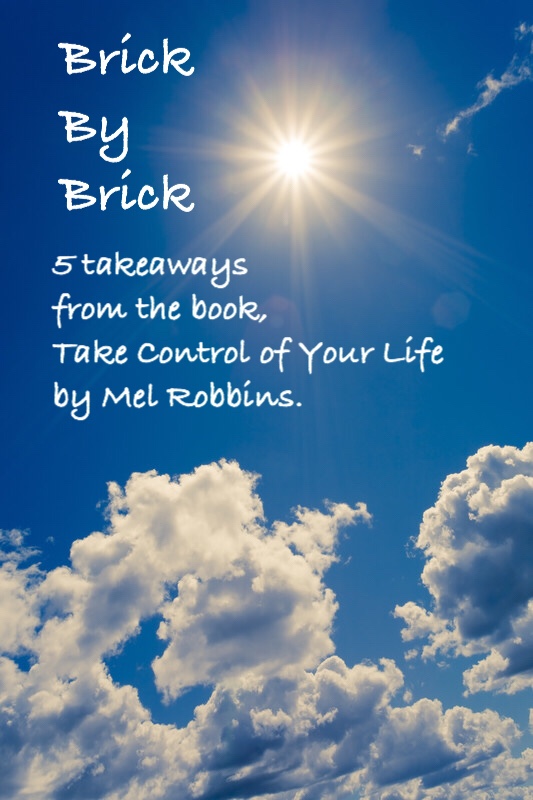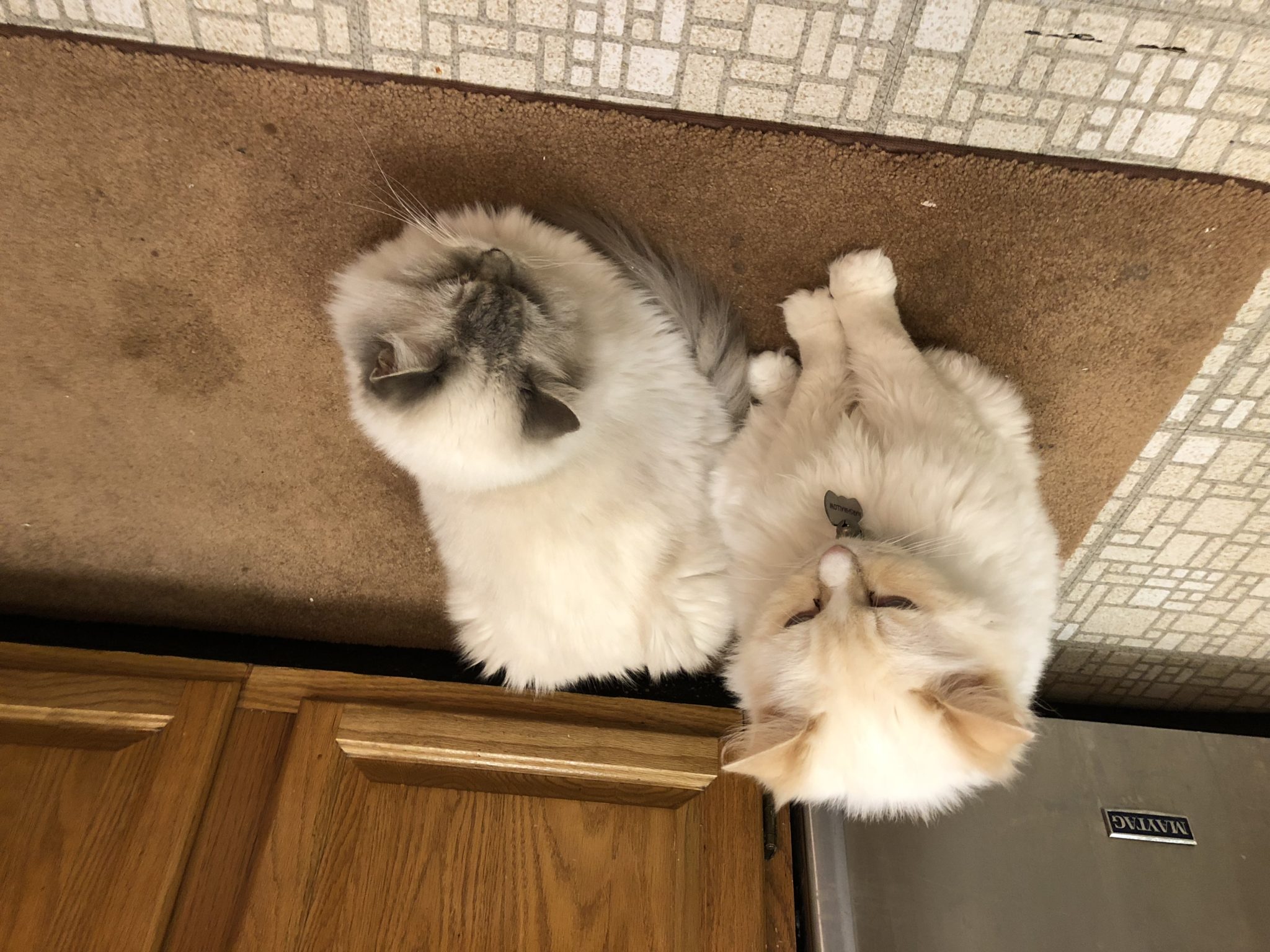At the beginning of this year, I made a list of books I plan to read in 2019. Take Control of Your Life by Mel Robbins was one of them. It’s still early in the year, but I’m glad I’ve finished it already. There were a lot of helpful tips for managing fear, changing your mindset and paying attention to what’s really going on in our bodies.

When we respond to fear, it’s our bodies that get triggered first. Your stomach may tighten, your face may get hot, some people break out in hives etc. The response is different for everyone, but it’s that discomfort that makes us not want to face our fears and return to normal as soon as possible. This is great in a situation where your safety is at risk and your gut is telling you to get away, but it’s not so helpful when you need to make changes in your life. Even positive change is scary because it takes us out of our comfort zone. There were several coaching sessions in the book, but I will focus on the first coaching session because it resonated with me as it’s where I am in life right now. I will summarize the five takeaways from the session and explain how they work.

Figuring out your Pattern
The workbook opens up with some questions. What is your biggest fear and what is your response to it? One of my biggest fears is being stuck in the same place in life and never figuring out my purpose. I can’t imagine being stuck at my dead end job for another five or ten years. I don’t even want to imagine it for another six months. I have no passion left for it. It sucks the energy right out of me. Part of my fear is that I’ll never find something that I love doing. I’d settle for tolerable at this point. This is why the first coaching session in the book, Take Control of Your Life, really resonated with me. The coaching session was with Dan, a man whose biggest fear is never figuring out what he wants to do in life. He’s currently a teacher, but wants to retire from that and wonders what else is out there for him, but what stops him from exploring other options is his pattern of thinking and rethinking. I am also an over thinker.
When I was exploring the possibility of becoming a transcriptionist, I was thinking of everything and it became overwhelming. I had so many questions floating around and instead of working on one thing at a time, I’d either jump all over the place or never get anything done. I’d worry about which software I was going to use. How I’d track the money I was making, how much money I’d make, what I’d need for my business, how to do an invoice, what would I do for a style guide? I needed to write a business plan and didn’t know which part to work on first. Basically, I had jumped way ahead of myself. Most of this was before even trying to work for a transcription company and in the end, I figured out that I didn’t want to make it my life’s work. I hated the different style guides, the low pay, the inaccessibility of so many things and how it would take me a long time to get back up to a good speed. I’d need to be transcribing constantly to get fast again and the fact was I didn’t have the time or energy to devote to it. It’s been a similar process with my interest in coaching and the possibility of running a childcare business from my home. I’m still interested in these things, but I often try to think about the big picture and analyze every detail. For example, I was listening to a podcast about how to set up a life coaching website, but I haven’t even taken the certification course yet.

In the book, Mel Robbins talks about wanting to own a small town coffee shop for years. Eventually, she got a job working in a small coffee shop on weekends, but she quickly learned that she hated working there. What she loved about the coffee shop was the sense of community and her ability to afford a daily coffee if she wanted. She also enjoyed taking the time to sit down with a cup of coffee and chat with those around her. What I loved about transcription was the flexible schedule, the ability to work from home and the idea that I’d be making content accessible to people. I was more excited about my work environment and the prospect of helping people than actually transcribing documents. These are all things I can find in other jobs that would be a better fit. Sometimes, we end up hating the thing that we think is our passion, but every time we explore a new possibility, we learn something new about ourselves.

Slow Down
If we keep ourselves too busy, we don’t have to think about what scares us. If I’m busy, I don’t have to apply for jobs. I don’t have to think about what I want to do next. I don’t have to financially plan for how I’m going to get there. If I’m busy, I keep things the same. They are comfortable because they are familiar, but they are uncomfortable at the same time because I feel the tension in my body. If we slow down, we can figure out what we really want to do. You can slow down by taking a walk in nature, meditating, spending time with those who support you, write in your journal, take a hot bath etc. Whatever reenergizes you.

State It To Create It
In the coaching session, Dan says, “don’t laugh” before he states his dream out loud. His passion is wine and he’s interested in taking a class or opening a wine bar. I didn’t think it was laughable. It’s his dream. Mel discussed how we under state our dreams or never state them out loud at all for the fear of being judged. What if we never achieve our dreams, what then? We’ve already stated what we want and now others might hold us accountable. We also fear that people may think our dreams are stupid or crazy.
What if you don’t know what your dream is? Follow what you enjoy. What are you interested in? What have you always wanted to do? Well, I’m in that boat. I don’t know exactly what my dream is. I’m interested in coaching, so my first step would be to figure out one thing I can do to explore it. Maybe it’s taking a class. Maybe it’s talking to a coach. Maybe it’s watching youtube videos. Once you start, it leads to something else.

Brick By Brick
Don’t think too big. Break your goals down into achievable steps that you can work on each day. When you have a box of legos, you construct your building brick by brick. That is how to pursue your dreams. If your dream is starting a blog, sit down with a blank document and write. Then when you have a few entries written, then worry about the next steps of setting up the website, promoting on social media etc. My interest is coaching, so I signed up for a couple of free webinars. It’s not a huge step, but it’s exploration and it’s one action I can take so I’m not just spinning my wheels.

Passion is not a Person, Place or Thing.
I needed to hear this. It’s not the job, a big house or the new relationship that brings passion into your life. It’s what you have within. You grow in to your passion by following your Curiosity. If you are wondering about your passion, try answering these questions. What are you curious about? What would you do for free? Whose life are you envious of and why? Follow the energy inside of you. That’s where passion lives.

Summary
To summarize, there were five takeaways from the first coaching session in Take Control of Your Life.
- 1. What is your biggest fear and what is your response? The first piece is to figure out your patterns.
- 2. Some of us use being busy to cover up our fears. Slow down. Take the time to listen to your inner voice in order to figure out your next steps.
- 3. State your dreams out loud in order to create them.
- 4. Achieve your goals brick by brick. Instead of thinking big, think small. Break actions down into small achievable tasks. If the task seems to overwhelming, break it down further.
- 5. Remember that passion is inside of you. Follow the things you are curious about. Follow the things that energize you and that will lead you in the right direction.
If you have the opportunity, I encourage you to listen to Take Control of Your Life and download the companion workbook. The questions are thought provoking, the tips are super useful and Mel and her coaching clients explain and demonstrate these concepts in a way that I can’t. Each person has a way of sharing their own personal stories. It’s conversational and relatable, so definitely check it out if you are interested in working on your mindset and breaking through fears. Have you read the book yet? What did you think? Tell me in the comments.

 This morning, I made a video with Rosebud and shared it with friends. It was basically a video message from her telling everyone, happy Valentine’s day while playing with her build a bouquet play set.
This morning, I made a video with Rosebud and shared it with friends. It was basically a video message from her telling everyone, happy Valentine’s day while playing with her build a bouquet play set.















 1. Find additional ways to increase traffic
1. Find additional ways to increase traffic





















 5. Clay
5. Clay 8. Nature
8. Nature







 The next time you are in a situation where you are wondering why on earth someone would do something, give it a second thought before jumping to conclusions. Of course we all are going to make judgements and see things through our own lenses, but there might be a completely reasonable explanation for someone’s actions. My response to that woman would be that instead of telling me to do the right thing, you should take your own advice. Let’s get back to the basics. A little kindness and compassion goes a long way because what you didn’t know is that I already had done the right thing for our neighborhood and at that very moment when you were being rude and judgmental, I was doing the right thing for my daughter.
The next time you are in a situation where you are wondering why on earth someone would do something, give it a second thought before jumping to conclusions. Of course we all are going to make judgements and see things through our own lenses, but there might be a completely reasonable explanation for someone’s actions. My response to that woman would be that instead of telling me to do the right thing, you should take your own advice. Let’s get back to the basics. A little kindness and compassion goes a long way because what you didn’t know is that I already had done the right thing for our neighborhood and at that very moment when you were being rude and judgmental, I was doing the right thing for my daughter.
 Recently, a new little boy joined our program. He connected with me instantly. On his first day, he started bringing blocks to me so I could help him build towers and ever since then, I’ve been his buddy. The classroom he’s in has been having a lot of ups and downs. It has been a while since they had two regular teachers in there, so I’ve been trying to help out in there as much as I can. He has special needs and requires some extra attention that he wouldn’t be getting if I didn’t take the time. I’m in and out of his room throughout the morning and he often cries and tries to leave with me.
Recently, a new little boy joined our program. He connected with me instantly. On his first day, he started bringing blocks to me so I could help him build towers and ever since then, I’ve been his buddy. The classroom he’s in has been having a lot of ups and downs. It has been a while since they had two regular teachers in there, so I’ve been trying to help out in there as much as I can. He has special needs and requires some extra attention that he wouldn’t be getting if I didn’t take the time. I’m in and out of his room throughout the morning and he often cries and tries to leave with me.





 I was sitting with a coworker at nap time as I usually do and she was reading an enrollment form for a child who will be joining us soon. After almost every item, she made a snarky comment. Although my coworker’s children are grown now, she must remember being a parent to young children. We learned that the child’s father recently left the family. The mother works and is now single. She is young and the little boy is her first and only child. We learned that he sleeps in the same room with her. It wasn’t clear if they bed share. His bed time is between 8:30 and 9 and he watches about three hours of tv each night.
I was sitting with a coworker at nap time as I usually do and she was reading an enrollment form for a child who will be joining us soon. After almost every item, she made a snarky comment. Although my coworker’s children are grown now, she must remember being a parent to young children. We learned that the child’s father recently left the family. The mother works and is now single. She is young and the little boy is her first and only child. We learned that he sleeps in the same room with her. It wasn’t clear if they bed share. His bed time is between 8:30 and 9 and he watches about three hours of tv each night. When we learned that he watches three hours of tv each night, her comment was, “that’s way too much tv. That’s a lot. I don’t even watch that much tv.” I mentioned that maybe that’s why his bed time was late because I’ve read research that shows that it takes children longer to settle if they watch tv right before bed. I said that the mom is young and newly single, that maybe she has a lot to do at night and that’s why he is watching so much tv. I really can empathize with this mom. Rosebud watches more tv than I would like, but there are times when I need to clean, cook, make phone calls etc. It’s hard to do that when you have a toddler who wants all your attention. While the teacher in me whole heartedly agrees that it’s too much tv, the parent in me understands.
When we learned that he watches three hours of tv each night, her comment was, “that’s way too much tv. That’s a lot. I don’t even watch that much tv.” I mentioned that maybe that’s why his bed time was late because I’ve read research that shows that it takes children longer to settle if they watch tv right before bed. I said that the mom is young and newly single, that maybe she has a lot to do at night and that’s why he is watching so much tv. I really can empathize with this mom. Rosebud watches more tv than I would like, but there are times when I need to clean, cook, make phone calls etc. It’s hard to do that when you have a toddler who wants all your attention. While the teacher in me whole heartedly agrees that it’s too much tv, the parent in me understands.
 Back then, I was not a parent yet and knew nothing about breast-feeding. One co-teacher was in the same boat as I was and the other co-teacher was a parent, but she formula fed. We had no idea and the fact is this mother was doing everything right in her situation and we had no business judging. We’d say things like, why doesn’t she bring more milk? Doesn’t she realize he’s hungry? She really needs to start bringing formula.
Back then, I was not a parent yet and knew nothing about breast-feeding. One co-teacher was in the same boat as I was and the other co-teacher was a parent, but she formula fed. We had no idea and the fact is this mother was doing everything right in her situation and we had no business judging. We’d say things like, why doesn’t she bring more milk? Doesn’t she realize he’s hungry? She really needs to start bringing formula.
